The soil biota comprises an enormous diversity with reports suggesting there could be greater than 15 000 different species per gram of soil. Much of this diversity, largely from the microflora group, is yet to be classified, however genomic technologies are helping us identify previously unknown soil organisms. Soil biology is represented by all three kingdoms of life: Bacteria, Archaea and Eukarya; in nearly all evolutionary branches. With such phylogenetic diversity it goes hand in hand that soil biology also posses an incredible range of functional diversity.
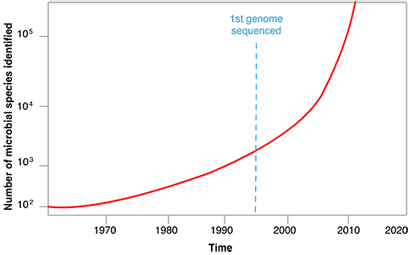
This diagram highlights how using genomic technologies based on DNA have exponentially increased the number of microbial organisms we have been able to identify.
There are three levels of participation by soil biota in natural soil processes/functions:
- Ecosystem engineers (e.g. earthworms, termites & ants),
- Litter transformers (e.g. microarthropods)
- Micro-food webs (e.g. microbes and microfaunal predators).
Ecosystem engineers
| Ecosystem engineers such as ants and earthworms primarily alter the physical structure of soil but also have an influence on the overall rates of nutrient cycling and energy flows. These organisms initiate fragmentation of organic residues and take organic matter deeper into soil profiles. They also create pores that allow water and plant roots (as well as other soil biota) access to deeper parts of the profile. | 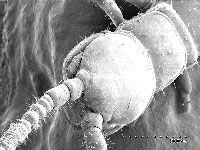 Centipede |
Litter transformers
| Litter transformers such as the microarthropod collembolas are involved in fragmenting plant residues and other organic substances making this material more available to microbes by increasing residue surface area for further chemical degradation and nutrient cycling. | 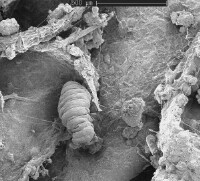 Collembola 'grazing' on decomposing plant material |
Micro-food web processors
Soil biota play a major role at all levels in micro-food webs whereby energy is transferred from one organism to another and as a consequence nutrients are recycled through the soil environment. For example, bacteria, archaea and fungi decompose plant litter through enzyme degradation to sequester nutrients and these organisms are in turn eaten by predatory protozoa, nematodes and arthropods. This predation helps maintain specific populations and keeps the predator prey balance in check. At the same time, however, litter transformers are breaking down dead organic matter, including remains of biota from all levels of the food web.
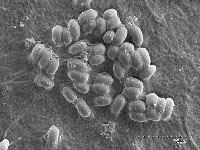 Bacterial colony | 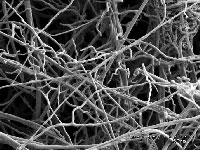 Fungal hyphal network | 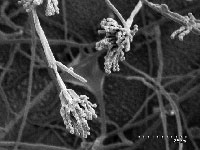 Fungal spores forming at the terminus of hyphae |
| Soil biology is not evenly distributed in soil and occurs in 'hot-spots' associated with soil organic matter. Decomposing residues, (obvious sites for both physical and enzymatic attack by a range of soil biota), the rhizosphere, (the soil zone that surrounds and is influenced by the roots of plants) and macroaggregates are all examples of such hot spots. | 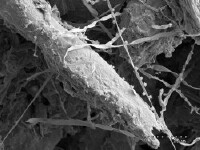 This photograph shows fungal hyphae enmeshing decomposing straw residue where the fungi will secrete a suite of enzymes to break down the structure of the straw. |
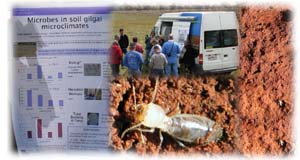
No comments:
Post a Comment